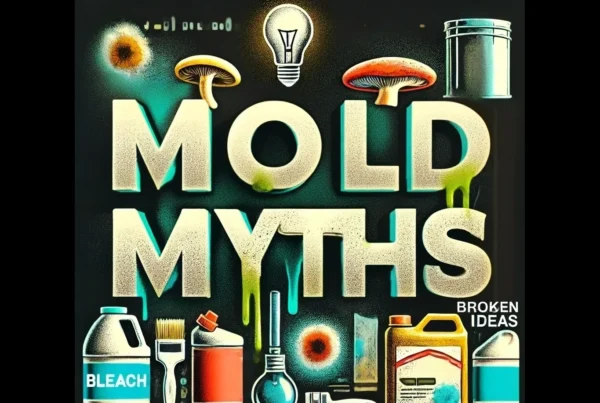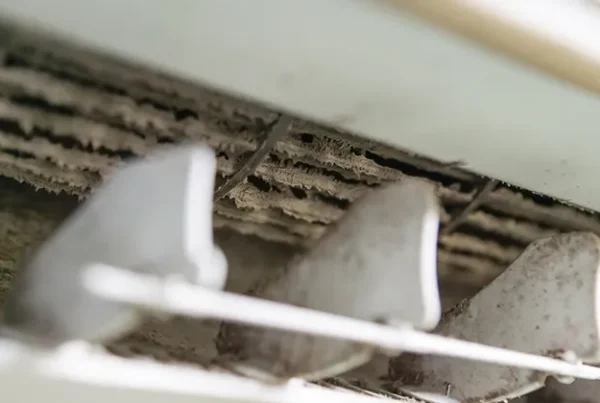Mold can easily grow in a wide variety of places throughout your home. You only need three things for mold to grow: mold spores, a food source, and enough moisture. Since mold spores are literally everywhere on earth and anything cellulosic (used to be alive) can act as a food source, moisture is generally the only missing requirement for mold to grow in your home. While there is no such thing as a home being “mold free”, mold prevention and control should be at the top of every homeowner’s “to-do” list.
One of the key factors to consider when making sure that your home is as mold resistant as possible is insulation. Insulation can help to maintain indoor temperature conditions which can help to control factors leading to mold growth so not having it where it counts can be a big problem. There are times, however, when poorly thought out insulation installations can actually make mold growth more likely and take a bad situation and make it worse.
Choosing the right insulation for the job
Many of us make the assumption that any insulation will do when remodeling or building a new home. Choosing the right insulation for the job can make the difference between years of increased comfort instead of increased headaches and possible mold problems.
Cellulose Insulation
Cellulose is a common material used as a loose or “blow-in” material because of its biodegradable properties and some unique advantages. Often repurposed newspaper, Cellulose insulation is a very green choice for your home that may really speak to your desire to be environmentally conscious. Cellulose is commonly installed in attics and can be blown into or on walls with a binder. Because of its highly efficient insulating ability and ability to stop air flow better than fiberglass between spaces, it can be a great choice for attics and wall cavities.
When installing it over existing fiberglass insulation as an improvement, it’s weight can be a problem because it can compress the fiberglass and eliminates the existing insulating value of the material. Mold rarely grows in cellulose insulation without direct water damage because of boric acid used as a fire retardant in the material. Boric acid is a natural mold preventer that is very effective at preventing mold growth. However, if installed in a very humid or wet environment like a crawl space, the boric acid can leach out with enough moisture and the cellulose material become a food source for mold. Due to the loose nature of the materials, it can be very difficult to completely remove, especially once it gets wet.
Fiberglass Insulation
Fiberglass insulation is constructed of tiny shards of glass that form pockets to trap air and help restrict the transfer of heat. Its naturally mold resistant in that the material itself is not a food source for mold. Because of the high amount of air that can move through fiberglass however, trapped particles can be filtered out of the air including food sources for mold and mold spores themselves. Over time, given the right conditions, mold can grow in fiberglass. Some forms of fiberglass insulation can be covered or “faced” with paper products. This paper is often a food source for mold and can be a problem if installed directly against wet areas (like basement or crawlspace walls).
Fiberglass insulation, like all fibrous insulation materials, can trap moisture and lead to condensation problems. Care needs to be taken to avoid water vapor from interacting with cold surfaces, so appropriately installed vapor barriers are really important with fiberglass.
Extruded foam board and spray foam insulation are becoming popular choices for wet areas of the home like your crawlspace or basement because they have great insulating properties, can stop most airflow leaks and are fairly impervious to moisture. Like all surfaces, when dirt accumulates over time, mold can grow on the surface of these materials, but often times it is fairly easy to clean off and remove. Some concerns over off-gassing of these materials has been made, but for most people, this is unlikely to be a major concern.
Check out the National Insulation Association to learn more about insulation to choose one right for you and your environment. Choosing your insulation is only half of the battle to prevent mold within your walls. Properly installing insulation is just as important to mold prevention.
Installing Insulation
When trying to create a mold resistant environment, installing the insulation properly is just as important as the type of insulation chosen. Insulation’s sole purpose is to be your home’s first line of defense for regulating temperature and often to aid in moisture control. Improperly installed insulation can have a negative effect on a home with regards to mold growth. For example, gaps left in the insulation can create cold spots that can lead to condensation and surface mold growth.
Insulating a home’s attic with additional insulation when the walls are not insulated could lead to an increased level of heat and humidity at the top of exterior walls leading to some significant mold growth around the outside perimeter of the home. Understanding the dynamics within the home and how additional insulation will impact it can be challenging. Seeking the advice of a professional and then holding them accountable for the results is often the best course of action for a homeowner trying to improve the efficiency of their home or reduce interior moisture issues.
Whether you are taking part in the building or remodeling process of or your home or not, understanding home insulation is impacting your home is important. Indiana Mold Remediation has over 20 years of experience working in and around buildings and can be a resource for questions about appropriate insulation and how it could relate to future mold problems. We are always available for questions and can provide an on-site inspection if mold is already a problem.




